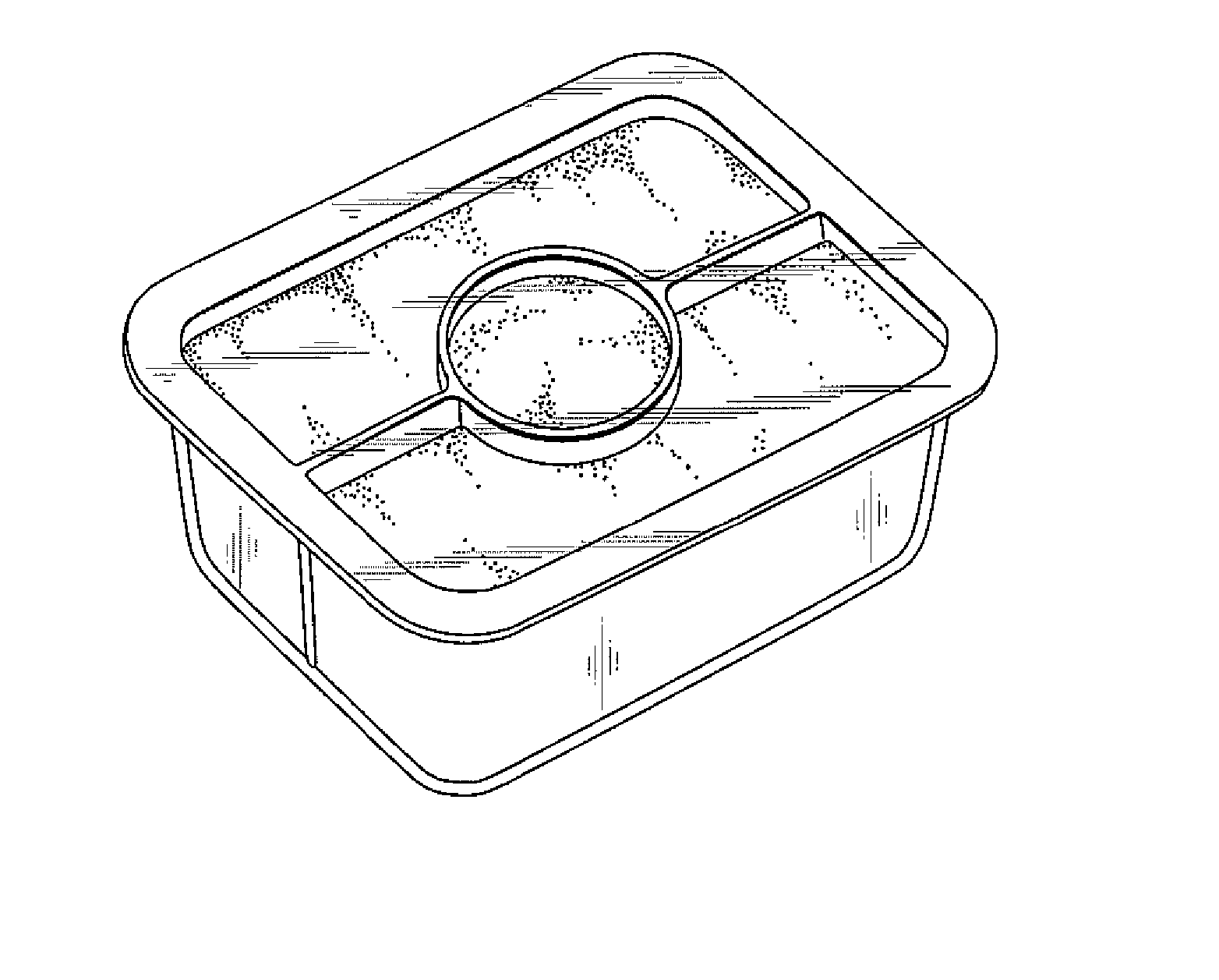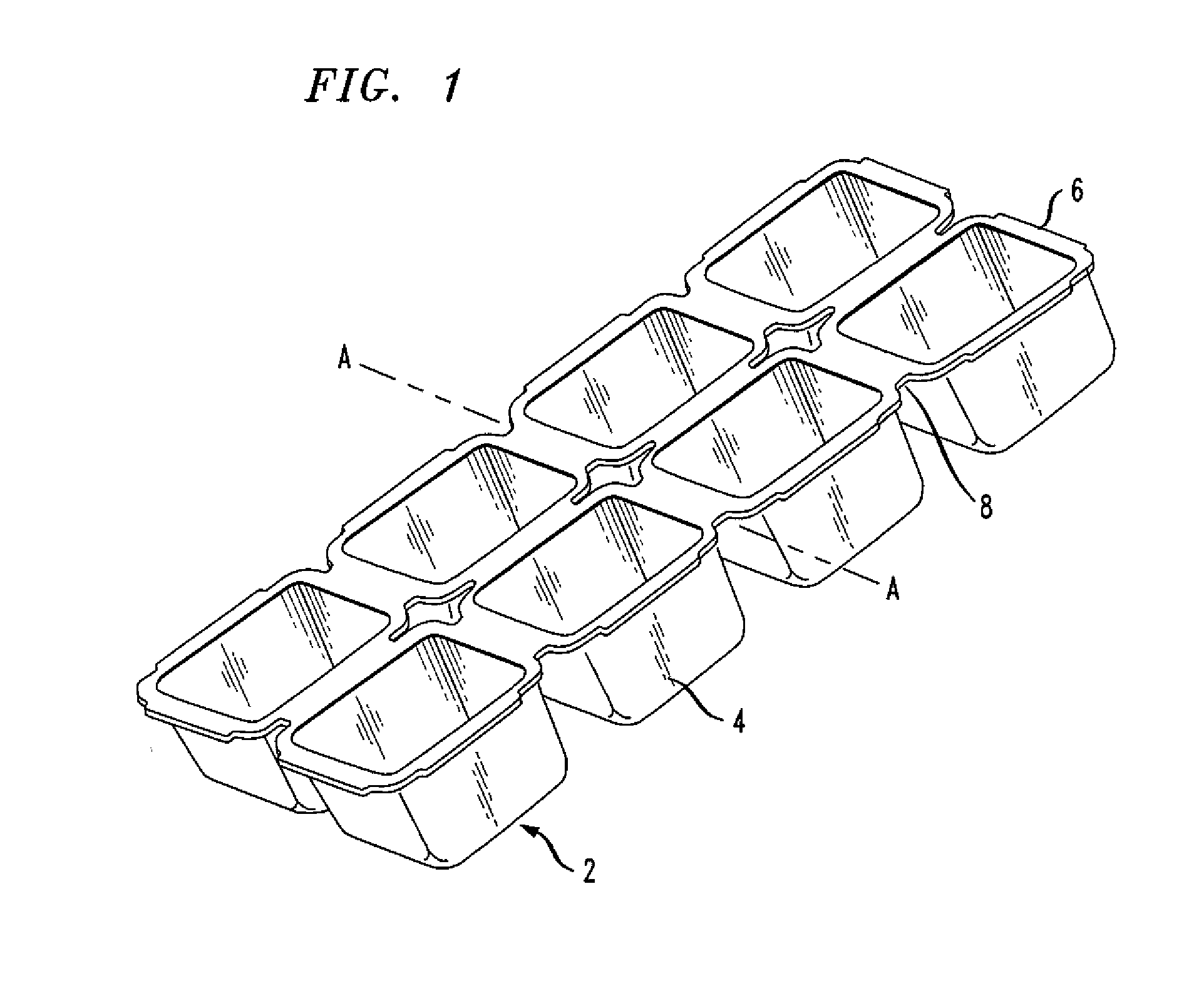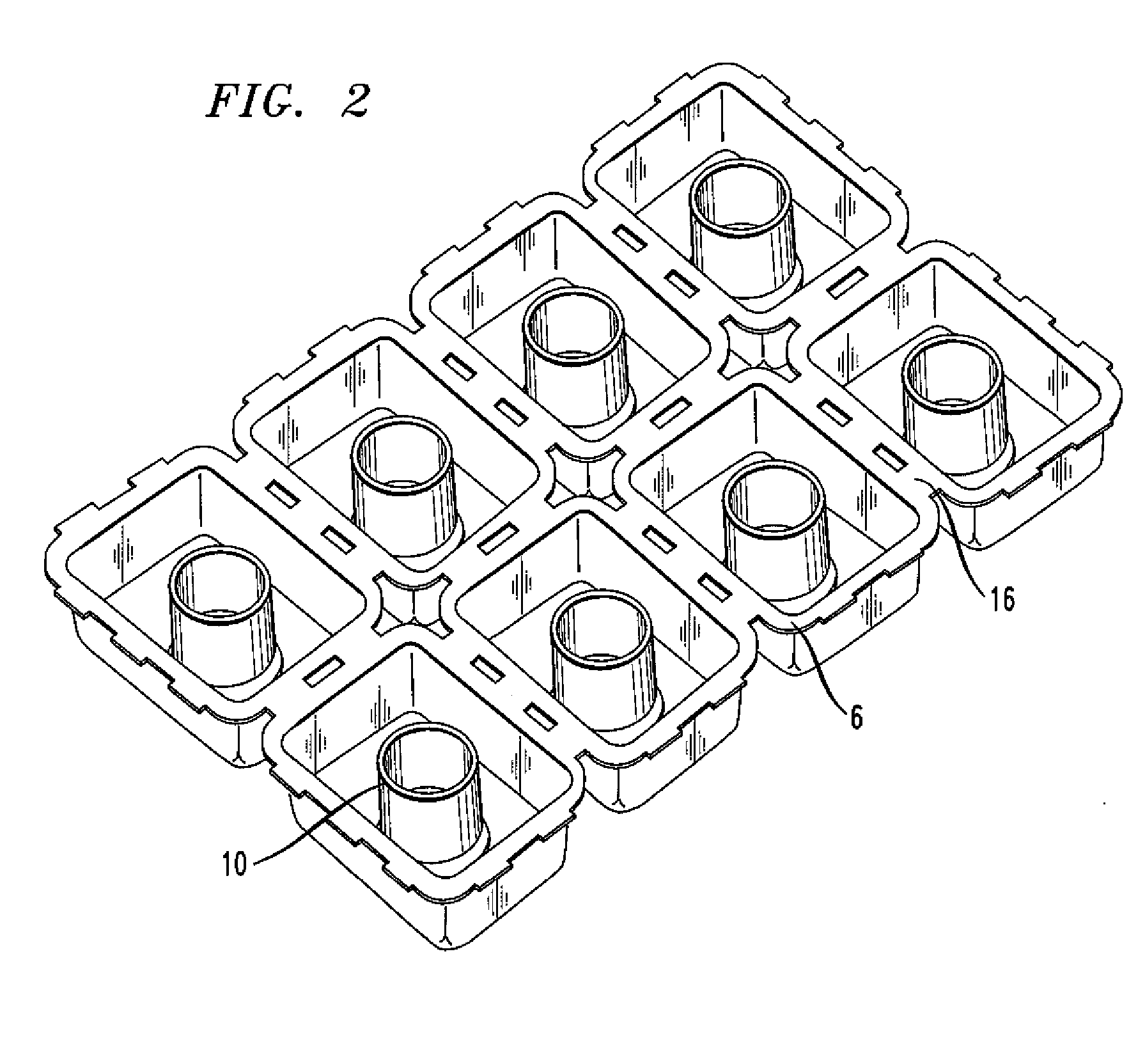Injection-Molded Water Soluble Container
a water soluble container and injection molding technology, applied in the field of rigid water soluble containers, can solve the problems of inconvenient unwrapping of blocks, inability to absorb liquid, and inability to withstand the pressure of the container,
- Summary
- Abstract
- Description
- Claims
- Application Information
AI Technical Summary
Problems solved by technology
Method used
Image
Examples
example 1
The Manufacture of Capsules by Injection Molding and Laser Welding
The Molding Stage
[0219] Capsules according to the invention were made by the injection molding method utilizing an Arborg 220D (35 ton) injection molding machine. The injection cavities were in a two-impression (cap / body) composite water-cooled stainless-steel mold. The PVOH had a material melt flow index of 10-20 grams / 10 min (DIN 53735).
[0220] Injection temperatures were 175° C., 180° C., 180° C. and 185° C. in the feed, zone 2 and 3, and Nozzle areas. The first stage injection pressure was 400 psi ( . . . ), and the hold stage pressure was 270 psi ( . . . ). The pressure well time was 3 sees in the first stage and 5 secs in the hold stage. Tool temperatures were between ambient and 40° C.
[0221] The molding pressures were just sufficient to fill the cavities on the first pressure stage and then sufficient packing pressure to hold on the second stage. Mold open and close rates were as fast as possible.
[0222] As...
example 2
The Manufacture of Capsules Using Laser Welding
[0226] In an alternative laser welding stage, the laser or other IR source is arranged to focus on the area of the join. This does not create a full circumferential weld but generates a spot weld. Again, the laser is continuously emitting. By forcing the filled capsules to roll (by mechanical means) whilst exposed to the laser, a full circumferential weld results. Alternatively, an optical fiber is used to deliver the IR to the join.
Test Results
[0227] PVOH capsules made in the manner described in Example 1 above were filled with either sugar or tea leaves. They were designed to have a cap portion that would dissolve sooner than the body, and thus open the capsule progressively. Similarly, a number of conventional gelatin capsules were also prepared and so filled.
[0228] In the test, a capsule was placed in each test subject's mouth (in the buccal cavity), and the subject was asked to note when he / she became aware of the taste of the ...
PUM
| Property | Measurement | Unit |
|---|---|---|
| particle size | aaaaa | aaaaa |
| temperature | aaaaa | aaaaa |
| temperature | aaaaa | aaaaa |
Abstract
Description
Claims
Application Information
 Login to View More
Login to View More - R&D
- Intellectual Property
- Life Sciences
- Materials
- Tech Scout
- Unparalleled Data Quality
- Higher Quality Content
- 60% Fewer Hallucinations
Browse by: Latest US Patents, China's latest patents, Technical Efficacy Thesaurus, Application Domain, Technology Topic, Popular Technical Reports.
© 2025 PatSnap. All rights reserved.Legal|Privacy policy|Modern Slavery Act Transparency Statement|Sitemap|About US| Contact US: help@patsnap.com



